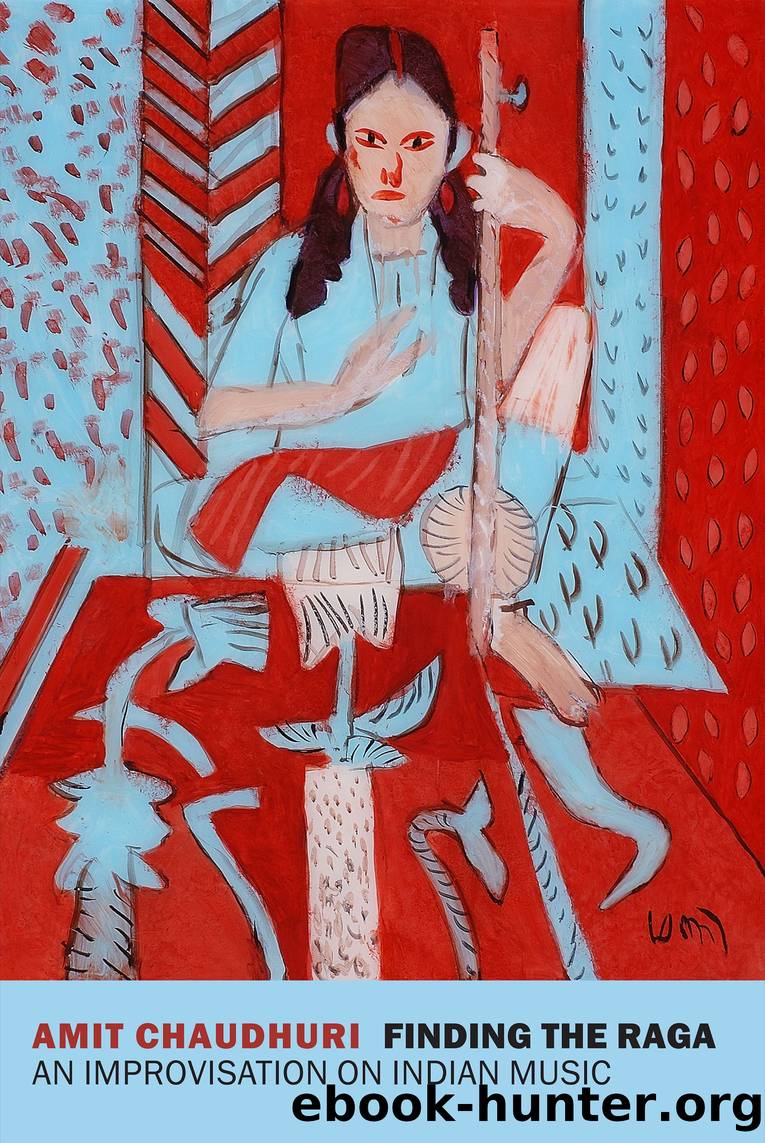Finding the Raga by Amit Chaudhuri

Author:Amit Chaudhuri
Language: eng
Format: epub
Publisher: New York Review Books
Published: 2021-03-30T00:00:00+00:00
Some ragas can wait for centuries to be sung. Ramdasi Malhar comes to mind. I heard a recording when I was eighteen or nineteen; it was by Amir Khan â a private, not a studio, recording, punctuated, as might be expected, by the audienceâs responses. It became the Amir Khan recording I loved most; Ramdasi Malhar became a favourite raga. I had never heard of it; even today, itâs obscure. Two recordings by Amir Khan are in circulation on the net; both are beautiful, and neither is a studio recording. The bandish (composition) might be Amir Khanâs own: âchhaye badara kare kareâ â âblack, black clouds gatherâ. Note that the line in English, because of the associations of the language, carries a foreboding that isnât there in Avadhi, where the same words are lit with yearning, even excitement. This is borne out by the next lines: âumad ghumad ghana barasata garajata / tyaso hi jiyara umango hi jayeâ â âit rains densely and thunders, umad ghumad, / in just such a way my heart leaps upâ. The raga has had a few other distinguished exponents (their versions mostly available as private recordings uploaded on YouTube) â Ali Akbar Khan; Bhimsen Joshi; Nazakat and Salamat Ali Khan â but Iâd hazard that, despite its cultivation by a minority of practitioners, it was Amir Khan who single-handedly brought Ramdasi Malhar to our attention.
âRamdasi Malharâ means âRamdasâs Malharâ. Some accounts suggest that Ramdas was a singer in Akbarâs court. That would place him in the sixteenth century and make him a contemporary of Tansenâs. But we canât be sure if Ramdas existed and created this version of Malhar four hundred years ago. All we have is a raga â barely, through a few recordings â which sounds, in the way Amir Khan sings it, a bit like Tansenâs Miyan ki Malhar, except for its surprising juxtaposition of both the flat and the normal third, or ga.
Miyan ki Malhar lingers in the lower octave, under the surface of the sa, plumbing the lower sixth and the flat and natural seventh. Then it ascends to daylight, moving to re, the second, then to the fourth, and back again. Remember that the fourth is like a new tonic; in the blues, boogie-woogie, and rock-and-roll scale, the pentatonic is played once from the tonic and once from the fourth. Miyan ki Malhar goes up to the fourth, embraces its sense of inauguration, moves up to the fifth, pa, drops down to the pensive flat third, then rises again to the fifth, and from there proceeds to its reluctant ascent to the firmament of the upper sa, with the black clouds gathering in the permutations of ni dha ni sa. Reaching the upper tonic, it collapses back to the lower tonic, with this phrase marking the swift descent:
sa ni pa ga, ma re sa
Download
This site does not store any files on its server. We only index and link to content provided by other sites. Please contact the content providers to delete copyright contents if any and email us, we'll remove relevant links or contents immediately.
I Have Something to Say by John Bowe(3286)
What Happened to You? by Oprah Winfrey(1483)
Doesn't Hurt to Ask by Trey Gowdy(1403)
Einstein: His Life and Universe by Walter Isaacson(1322)
Solutions and Other Problems by Allie Brosh(1036)
Disloyal: A Memoir by Michael Cohen(1025)
American Dreams by Unknown(865)
Don't Call it a Cult by Sarah Berman(846)
Infinite Circle by Bernie Glassman(835)
Home for the Soul by Sara Bird(815)
Group by Christie Tate(813)
Talk of the Ton by unknow(737)
The Silent Cry by Cathy Glass(685)
Total F*cking Godhead by Corbin Reiff(667)
Severed by John Gilmore(657)
Searching for Family and Traditions at the French Table by Carole Bumpus(650)
Before & Laughter by Jimmy Carr(617)
The Battle of Mogadishu by Matt Eversmann & Dan Schilling(616)
Things I Wish I Knew Before My Mom Died by Ty Alexander(602)
